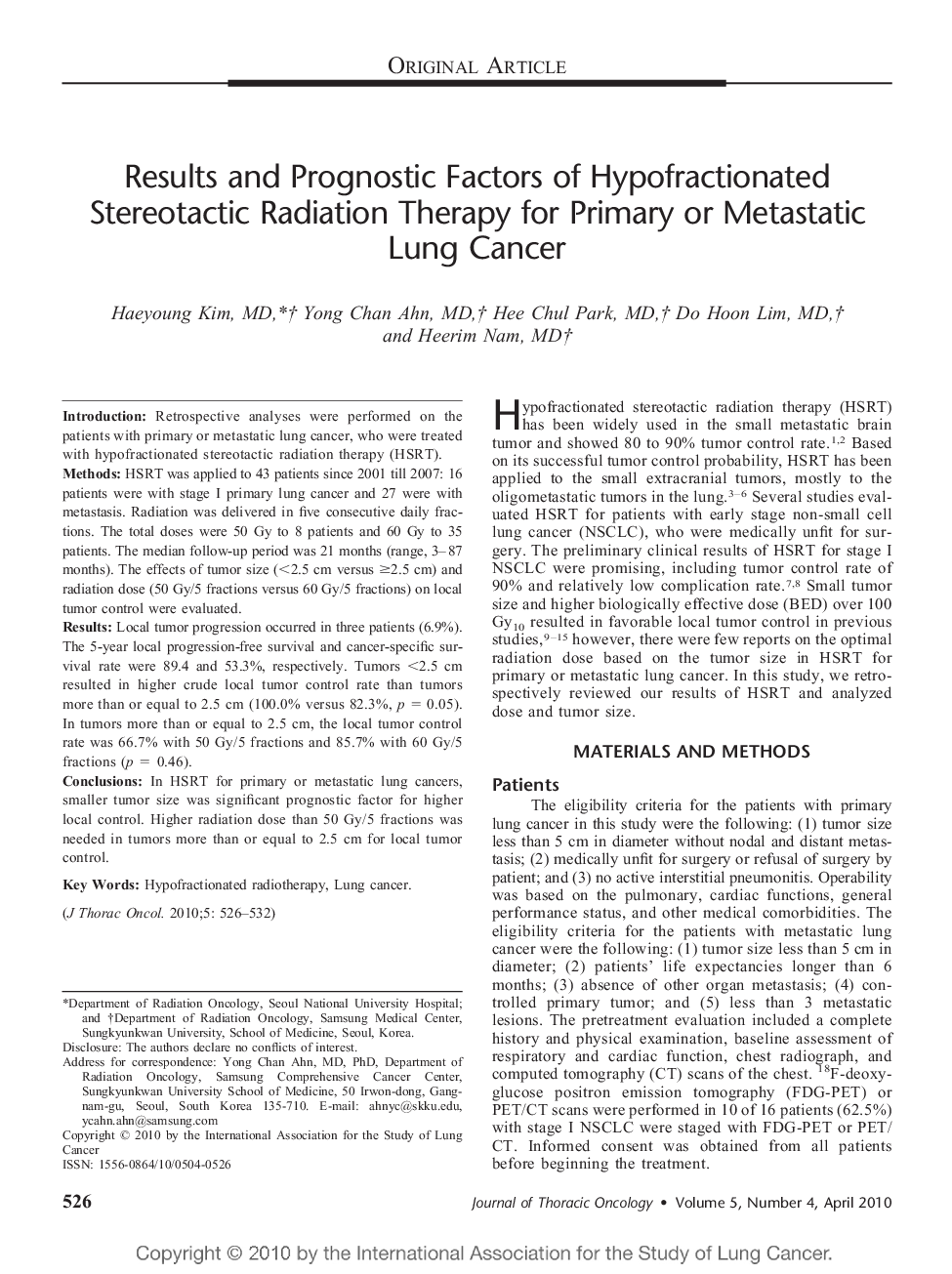| Article ID | Journal | Published Year | Pages | File Type |
|---|---|---|---|---|
| 3991867 | Journal of Thoracic Oncology | 2010 | 7 Pages |
IntroductionRetrospective analyses were performed on the patients with primary or metastatic lung cancer, who were treated with hypofractionated stereotactic radiation therapy (HSRT).MethodsHSRT was applied to 43 patients since 2001 till 2007: 16 patients were with stage I primary lung cancer and 27 were with metastasis. Radiation was delivered in five consecutive daily fractions. The total doses were 50 Gy to 8 patients and 60 Gy to 35 patients. The median follow-up period was 21 months (range, 3-87 months). The effects of tumor size (<2.5 cm versus ≥2.5 cm) and radiation dose (50 Gy/5 fractions versus 60 Gy/5 fractions) on local tumor control were evaluated.ResultsLocal tumor progression occurred in three patients (6.9%). The 5-year local progression-free survival and cancer-specific survival rate were 89.4 and 53.3%, respectively. Tumors <2.5 cm resulted in higher crude local tumor control rate than tumors more than or equal to 2.5 cm (100.0% versus 82.3%, p = 0.05). In tumors more than or equal to 2.5 cm, the local tumor control rate was 66.7% with 50 Gy/5 fractions and 85.7% with 60 Gy/5 fractions (p = 0.46).ConclusionsIn HSRT for primary or metastatic lung cancers, smaller tumor size was significant prognostic factor for higher local control. Higher radiation dose than 50 Gy/5 fractions was needed in tumors more than or equal to 2.5 cm for local tumor control.
